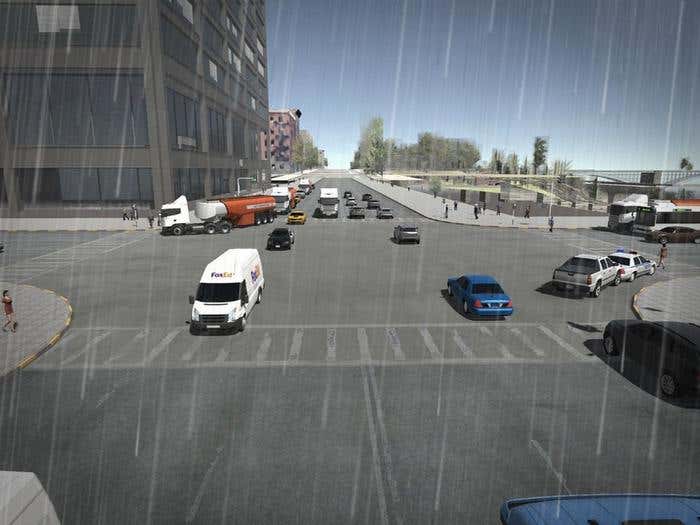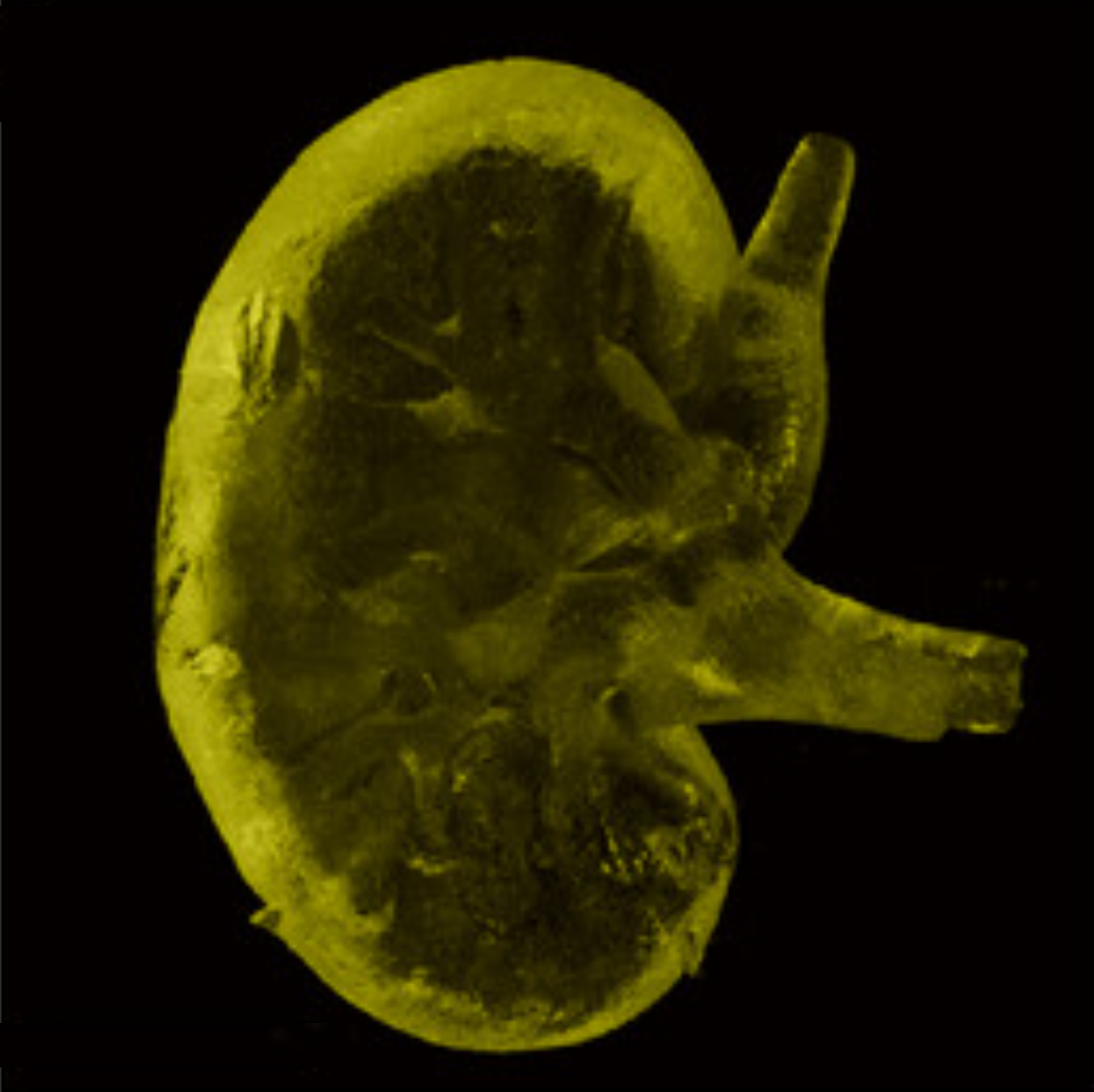Lifesaving technology uses AI to make traffic intersections safer, more efficient
The program is known as PANORAMA: An Interpretable Context-Aware AI Framework for Intersection Detection and Signal Optimization.

[Nov. 16, 2023: JD Shavit, The Brighter Side of News]
PANORAMA integrates computer vision technology and optimal control to create real-time timing plans that enhance intersection safety and efficiency, taking into account various factors such as time of day, weather conditions like rain, and traffic characteristics. (CREDIT: SMU)
In a significant stride towards revolutionizing traffic safety and efficiency at intersections, Professor Khaled Abdelghany of Southern Methodist University (SMU) has been awarded a substantial three-year, $1.2 million grant by the Federal Highway Administration.
The grant is poised to support the development of an innovative computer program harnessing the power of artificial intelligence (AI). This program, known as PANORAMA: An Interpretable Context-Aware AI Framework for Intersection Detection and Signal Optimization, is set to transform the way intersections function, ensuring the safety of both vehicles and pedestrians.
Abdelghany, a distinguished professor of civil and environmental engineering at SMU, is leading the charge in this ambitious endeavor. He holds positions at both the SMU Lyle School of Engineering's Department of Civil and Environmental Engineering and the Stephanie and Hunter Hunt Institute for Engineering and Humanity.
Collaborating alongside him are Professor Michael Hunter from the Georgia Institute of Technology, who also serves as the Director of the Georgia Transportation Institute, and Assistant Professor Mahdi Khodayar from The University of Tulsa.
Related Stories
This pivotal grant is part of the Federal Highway Administration's Exploratory Advanced Research (EAR) Program, which actively partners with universities, private companies, and public entities to pioneer research in areas of paramount importance. The overarching objective of the EAR Program is to harness the capabilities of artificial intelligence (AI) and machine learning to revolutionize transportation, making it not only safer but more efficient as well.
Traffic intersections play an indispensable role in the realm of highway safety and efficiency. Shockingly, approximately one-quarter of traffic fatalities and nearly half of all traffic injuries in the United States are directly attributed to intersections, according to data from the Federal Highway Administration. This alarming statistic underscores the critical need for innovative solutions to enhance intersection safety and efficiency.
Enter PANORAMA: The Interpretable Context-Aware AI Framework for Intersection Detection and Signal Optimization. The program represents a groundbreaking approach to the optimization of traffic lights at intersections across the nation. Conventionally, traffic lights are programmed to alternate between red and green based on vehicle detection as vehicles approach an intersection, combined with historical traffic patterns. However, this approach falls short when it comes to accommodating short-term variations in traffic patterns due to factors such as weather changes and the presence of other intersection users, including pedestrians, cyclists, and wheelchair users.
PANORAMA: An Interpretable Context-Aware AI Framework for Intersection Detection and Signal Optimization. This program can be applied to traffic lights at intersections throughout the country. (CREDIT: SMU)
To address these challenges, Abdelghany, Hunter, and Khodayar have devised PANORAMA. This innovative program employs video cameras to identify and categorize all traffic at intersections, including vehicles, scooters, and other entities. Crucially, PANORAMA goes beyond mere vehicle detection, as it also takes into account the presence of pedestrians, cyclists, and individuals with disabilities. Subsequently, the program determines whether the traffic light should display a green or red signal, effectively creating an adaptive real-time control system.
The core of PANORAMA lies in its integration of computer vision technology and optimal control techniques. By doing so, it generates real-time timing plans that optimize intersection safety and efficiency while considering a multitude of factors, such as the time of day, weather conditions, and traffic characteristics. This approach ensures that all intersection users, including pedestrians, cyclists, scooter users, and those with disabilities, can traverse intersections safely and efficiently.
Professor Hunter emphasized the importance of equity in transportation, stating, "Ensuring safety for all users, including pedestrians, cyclists, scooter users, and those with disabilities, is essential for equitable transportation. Moreover, PANORAMA will be cost-effective as it does not require infrastructure beyond that already found at many intersections."
One of the remarkable features of PANORAMA is its implementation of interpretable AI. Unlike traditional black-box AI systems, PANORAMA provides clear explanations for its recommendations regarding green or red-light signals. This transparency offers essential information to traffic light controller operators, facilitating informed decision-making and enhancing the overall trustworthiness of the system.
Given the substantial volume of data required to train AI effectively, the research team will tap into SMU's high-performance computing capabilities to develop the PANORAMA model. However, once the system is sufficiently trained and validated, it will be capable of running on any standard computer, making its implementation scalable and adaptable.
The benefits of PANORAMA extend far beyond enhancing safety and reducing congestion at intersections. Abdelghany noted, "Not only will PANORAMA help intersections be safer and traffic run smoother – cutting down on emissions from idling cars – but we'll be able to assess the performance of each intersection, knowing which ones are operating efficiently and which aren't."
The groundbreaking work undertaken by Professor Khaled Abdelghany and his esteemed colleagues, Professor Michael Hunter and Assistant Professor Mahdi Khodayar, has the potential to revolutionize intersection safety and efficiency in the United States.
The PANORAMA program, supported by a $1.2 million grant from the Federal Highway Administration, represents a bold step towards leveraging AI and machine learning technology to create a safer and more equitable transportation system for all. By prioritizing the needs of pedestrians, cyclists, and individuals with disabilities, PANORAMA aims to transform intersections into spaces where safety and efficiency coexist harmoniously, ultimately benefiting society as a whole.
Note: Materials provided above by The Brighter Side of News. Content may be edited for style and length.
Like these kind of feel good stories? Get the Brighter Side of News' newsletter.



